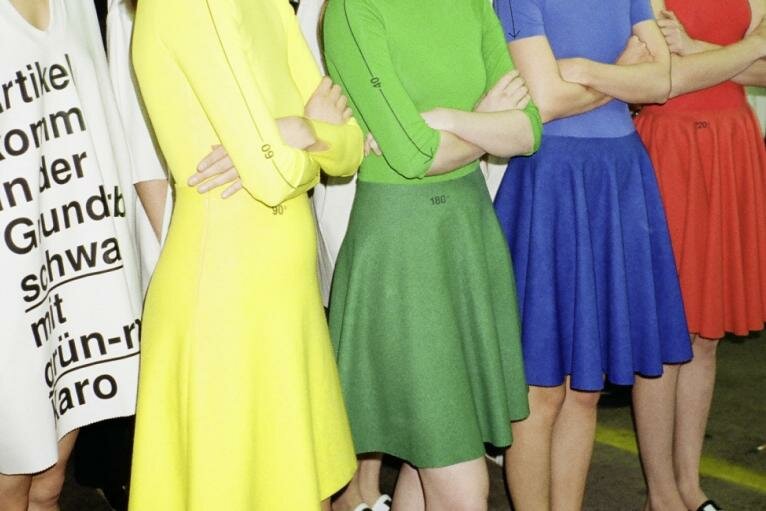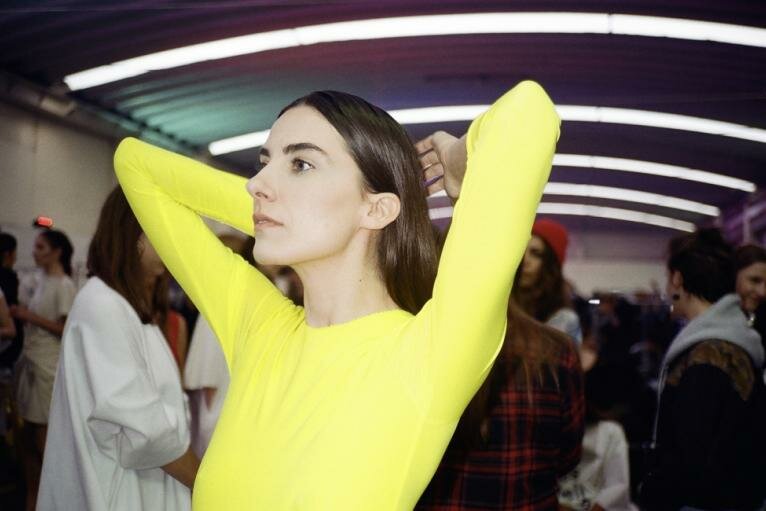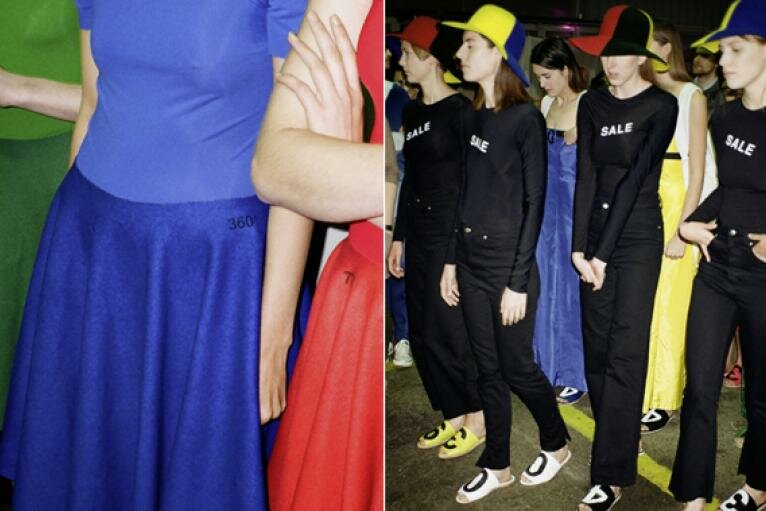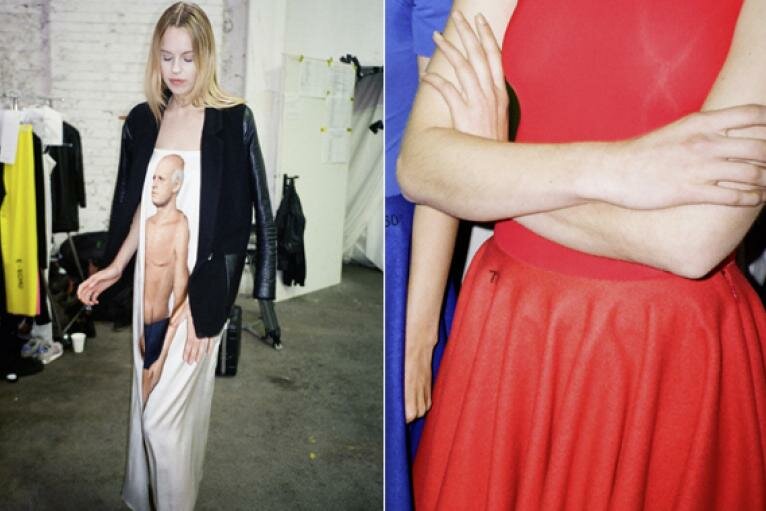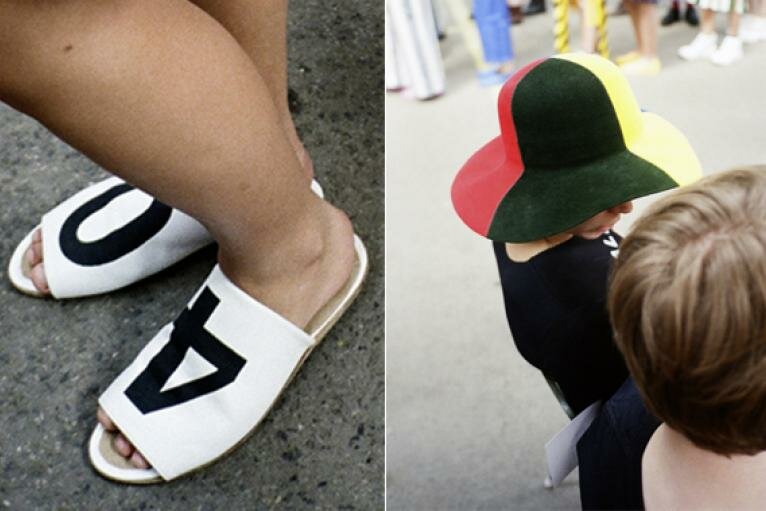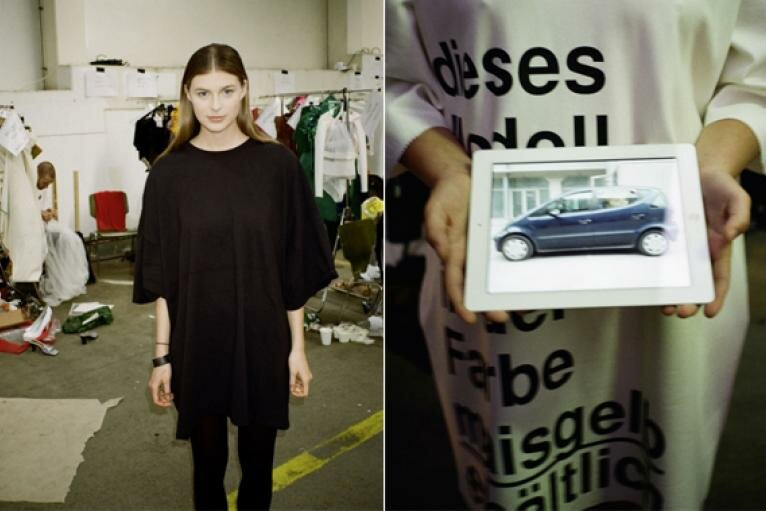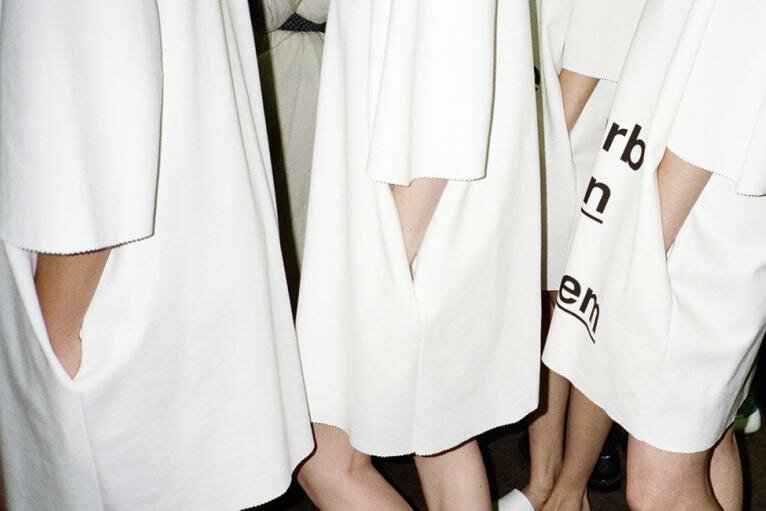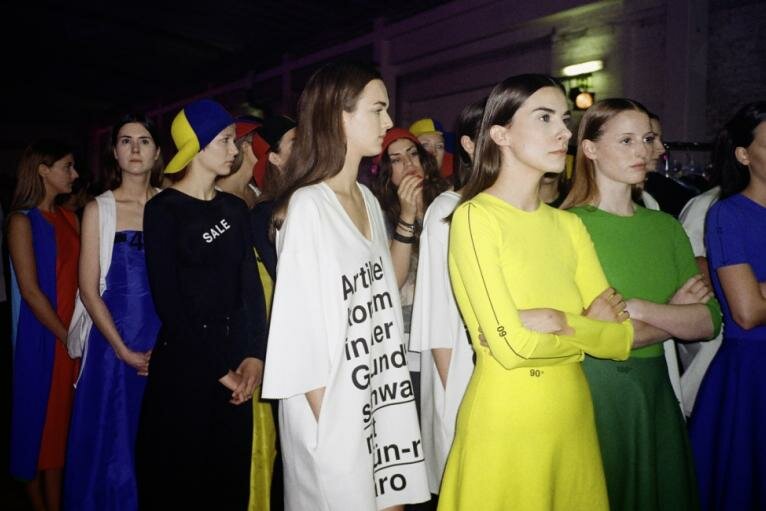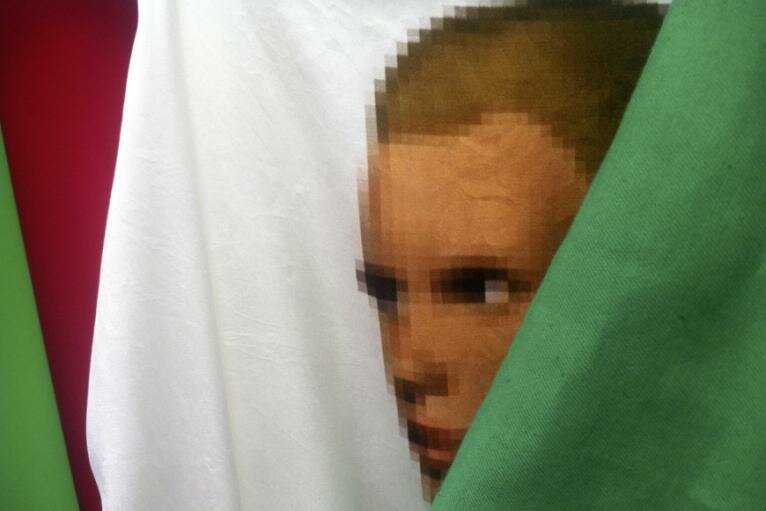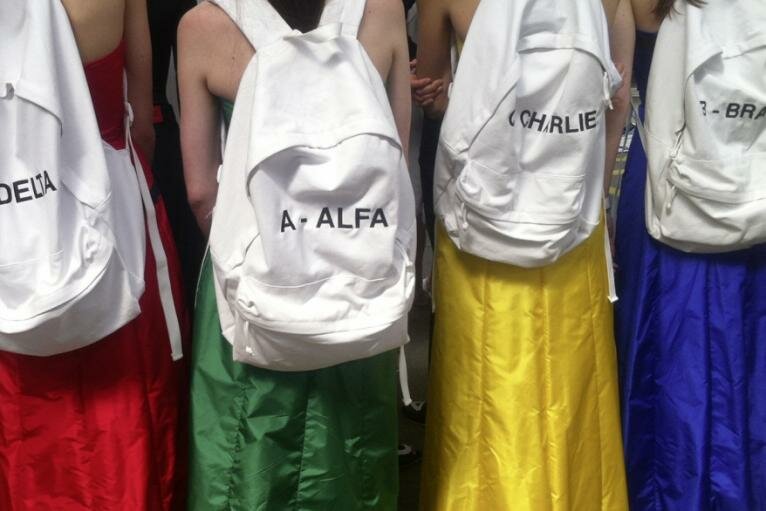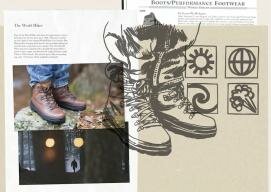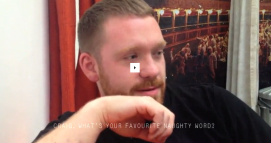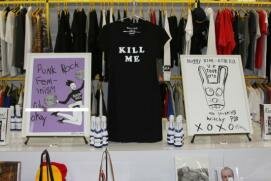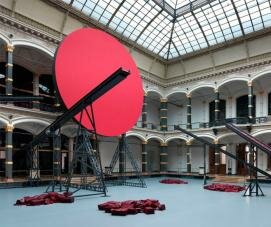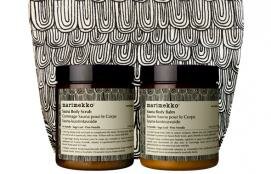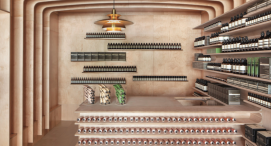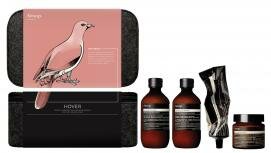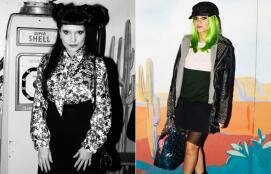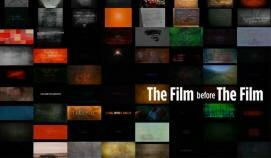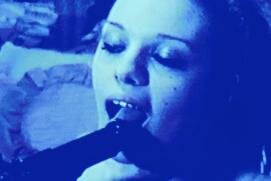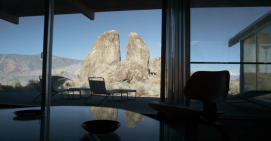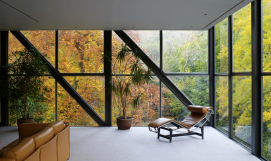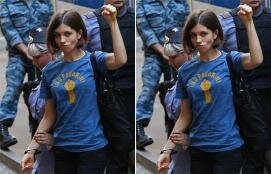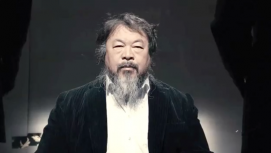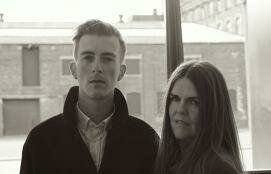- 1
- 2
- 3
- next ›
- last »
It's been a while since we've heard from Anna-Sophie Berger, although if you frequent the same websites we do, hers is a name you might have seen over the last couple of weeks. The young designer made good on her excellent 2011 "m/m2" collection with her latest output, a comprehensive women's collection that she debuted at Die Angewandte's graduate show (the Viennese fashion institution from which she has just graduated). "Fashion is Fast" is a wonderfully conceptual offering that takes a critical look at the fickle world of fashion and the trends that move it forward. With an eye to the fast fashion chains that take these trends to the mainstream, Anna-Sophie both embraces and critiques the production/retail model through her own designs.
Having just gone through the strenuous final weeks of school to get the collection together for the show, Anna-Sophie is taking some well-deserved time off before no doubt moving on to bigger and better things. We caught up with the young designer to talk about the concepts behind "Fashion is Fast" and where she sees herself and her art, post graduation.
Jack Smylie: Hey Anna-Sophie, it's been a while since we last caught up - What have you been working on in 2013?
Anna-Sophie Berger: 2013... wait, let me see. Mostly the new collection. Finishing the production of the prototypes and planning the imagery and presentations. I had a show in Vienna where I presented my performance piece “fashion instruction”. Two performers carrying out instructions they have never heard before, without rehearsing. Ah yes, and I had the exhibition in New York, at JTT gallery in January. I was showing the old collection mm2. It was very abstract and mostly focused on the textile-object quality of the pieces. I was very happy about it. Also experiencing how people reacted to my work in that context and bringing it to a, lets say, more professional level. [Take a look at the exhibition here and here].
JS: Tell us a bit about your diploma collection - what is the underlying concept you worked off?
ASB: In a nutshell, I would describe my collection “Fashion is Fast” as a formal analysis and illustration of trend, an exploration of form as a phenomenon of time. A certain shape and a distinct contrasting other shape for example convex and concave are juxtaposed with each other to show on the one hand the banality of mathematical change that at the same time has an immense formal as well as visual impact and is deciding over a garment’s being in or out of time, therefore in and out of fashion.
JS: Obviously the idea of fast fashion is to respond quickly to trends and meet sudden, fleeting demand. How are trends integral to your concept?
ASB: Well, the title suggests an ironic reading. I came up with it long before the actual collection took shape. It happened while reading Roland Barthes, while being busy with the theoretic idea of trends. It can be read as a critic; I, myself, as the creative part take little pleasure in the exploration of ideas per season, shooting out shapes in the pursuit of the new, while neglecting my very personal need to work on things steadily and slowly. This is one of my biggest issues with fashion. While at the same time, paradoxically, I am also immensly intrigued by this fastness on a conceptual level. For the collection all aspects of low-end commercial production were influencial, cheap stuff that comes and goes, a type of wrist watch, a certain base-ball cap, getting 10,000 likes on Tumblr, appearing and disappearing. At the same time I constructed the collection, that plays with this fire, as a silent sort of basic wardrobe, focusing on essential elements. In that way the collection definitely has paradox qualities, which makes me very happy.
JS: The collection title had me think straight away of the 'fast fashion' model practiced by a growing number of retail chains. Are you a fan of the hyper-produced democratisation of fashion by these stores, or is your collection more of a critical response and 'remedy'? How does it relate?
ASB: You got it absolutely right. This was my reference point. I noticed, that while conceptualising my idea, I became increasingly bored of the elitist idea of fashion’s “creation of the new shape”. Not only because it seems to me a practice that usually doesn satisfy my needs as consumer of fashion, but also conceptually, the idea of shape over all means started to appall me. I wanted to work on fashion from the inside, media inherent again. And I looked a lot at commercial production. My research was full of H&M webshop screenshots, formal analysis of a very commercial aspect of fashion. That is also because it seems to tell me more on a sociological level, that is about people’s approach towards consumed fashion.
But then of course by no means the idea is to hype mass production or retail chains’ workflows, it is more about drawing the focus and dealing with zeitgeist, that is as we know, never rooted just in the top so called “avant-garde” end. I think we need something new, in between extremes - on a market level. I mean.
JS: Can you take us through some of the design choices you made?
ASB: With every group of 4, I tried to explore one element of a basic wardrobe and juxtapose different “fashion glossary” based types. E.g. oversized t-shirts with 4 different collars, skirts with 4 different circle widths, 4 sizes of knitwear, jeans in 4 different geometric outlines. The question then was how to harmonize this arbitrariness induced through the concept. On a print/graphic level I got busy with symbolic elements that would highlight the changes the 4 items of a group would undergo, through numbers, arrows, texts. The color palette came soon and naturally, again drawing from commerce, as the use of primary colors ist the easiest way of distinguishing types of products, e.g. tooth brushes. But then juxtaposing the commercial references with extremely crafty techniques and materials, subverting again the idea of a clear reading. Also the contrast of RGB and CMYK as symbols for digital versus analog perception played a role. Fabric choice was defined by an aim to explore all sorts of materials used, from silk twill for hermes-like scarfs, to silk tafetta for balldresses, cotton gabardines for suits, loden wool from Austria for skirts as opposed to lycra tops. I think for me the skirt group is very essential, as it incorparated strongly all my formal pattern and print based ideas of exploration of change.
JS: From shapes, to color and even the way you've presented the imagery, in sequenced blocks, there is an aspect of performance to the collection - is performance something that continues to inspire you?
ASB: Yes, that is definitely true. I would say even more so as I have worked with performance for quite a while. The collection too has been presented to the jury as performance. I have been working with a piece called “fashion instruction” for quite a while. A specific recorded instructional text is being played to models who are asked to carry out the instructions. Within itself it is an illustration of work routine in fashion photography and fits the collection very well. At the same time it can really be based on certain garments, as now on the skirts. I love Tino Sehgal’s work - I just experienced it again at the Biennale opening - but also modern dance pieces like the works of Jerome Bell continue to inspire me. Performance enables me to really explore human behaviour, gestures etc on a level that photography would always overrule.
JS: You seem to be popping up all over the internet at the moment - how do you plan to capitalize on this exposure?
ASB: These days I still answer mostly by saying I need time to think.
What I need to do is to define my position towards production. I am working as an artist and enjoy most of the aspects of that practice. Then of course a fashion piece is to be worn and I need to react to people asking for the product. I would like to find a way to balance a certain amount of commercial marketing and my freedom to work on all my projects without becoming a “fashion house”. I would like to challenge this whole business and to me it’s the anachronistic inhuman conditions that are hardly applicable to young creative people anyways. That is why I take the attention you are talking about very seriously. I will come up with a somewhat conceptual approach to this questions some time soon, after a summer of rest, eventually. Maybe there will be fast fashion, slowly served, or slow fashion served quickly and short. Hahaha!
JS: Last time we spoke you were working on a new project: ohneohne. How is that developing?
ASB: ohneohne is waiting for its layout, as the whole creative team was graduating this June we had to take it a little slower but we are super excited to be back and finally get to work with the physical thing.
JS: Any plans for the remainder of the year?
ASB: Oh yes, apart from ohneohne I am working on a presentation of my collection in London, eventually during Frieze in collaboration with my friend Sanna Helena Berger from Tourist magazine. That too will help me define a direction. I have several little projects involving the collection and I will take the summer to sort out my immense pool of photographic work, eventually shaping it to a book or some sort of collection. There are always so many ideas that thrill me, so many collaborations imaginable, so I am very excited.
Backstage photography: Milica Balubdzic
Title image: Photographer Maria Ziegelböck
Model: Jana Wieland
Styling: Martina Tiefenthaler
Hair: Wolfgang Lindenhofer
Make-up: Nicole Jaritz
All Rights: Anna-Sophie Berger 2013
Jack Smylie
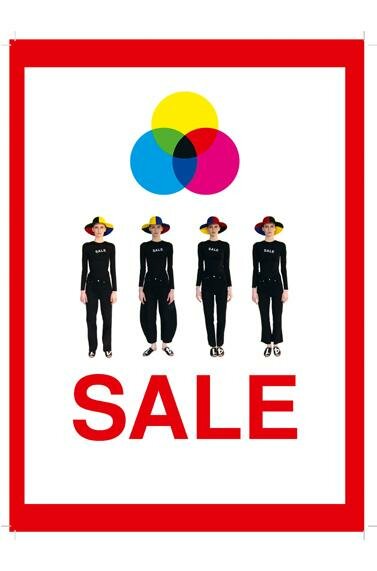
end








